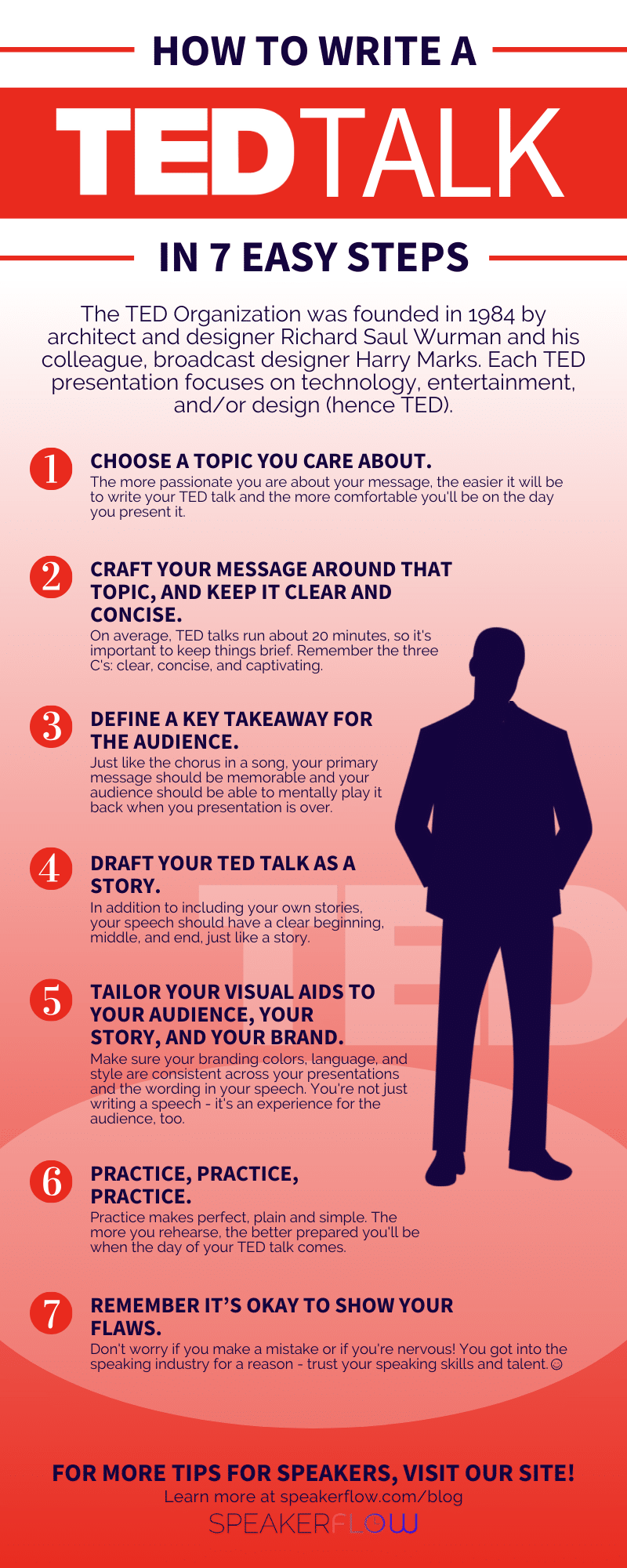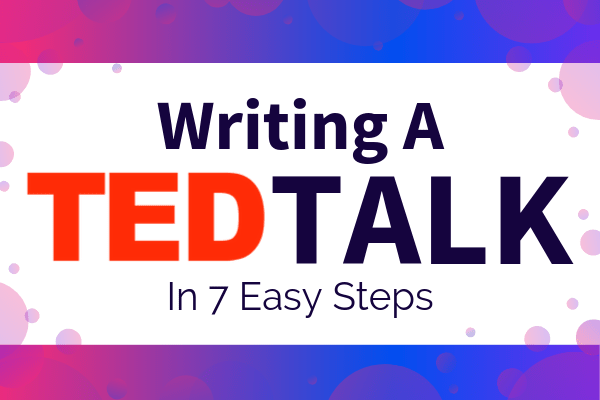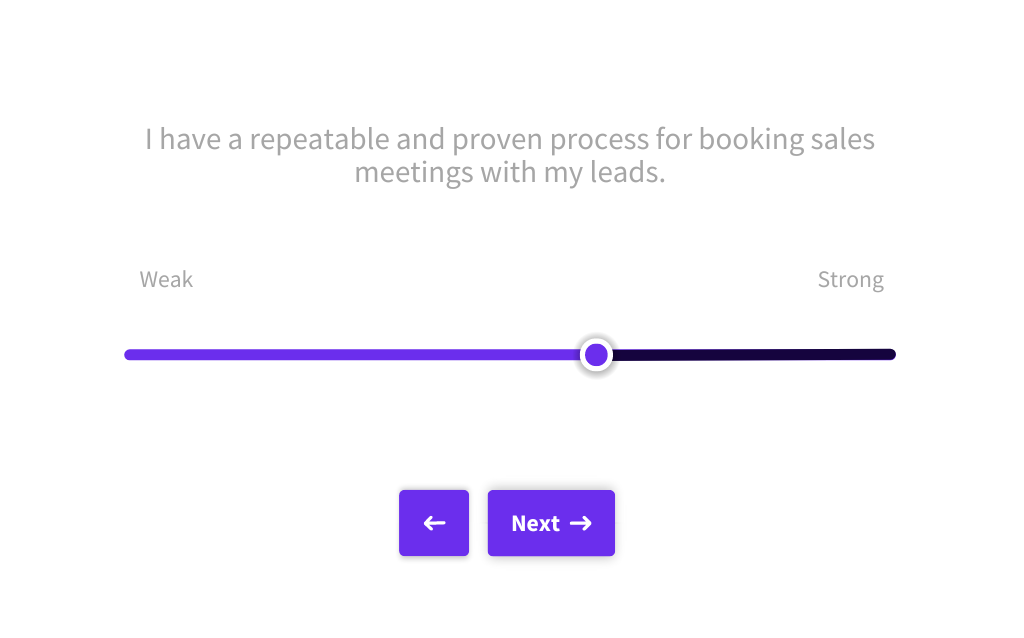Within the speaking industry, there’s more than one way to make it to the top. The most obvious path is the numbers game, in which you speak at as many events as possible. On the other hand, the second option for gaining prestige is by first doing so in your focus industry. For example, if you work in finance, you would climb the latter within the finance industry first. From there, you would branch into speaking as a secondary profession before eventually speaking full-time. In many cases, it is this route that leads to an invitation for a TEDx or TED event. As a result, learning how to write a TED talk can be a bit less structured than writing a normal speech.
That said, although writing a TED talk can be a challenge, the benefits of speaking for TED events far outnumber the trials. Not only are they a stellar addition to your resume. They’re also a highly publicized and easily accessible way for you to share your message. Unlike in-person events, because TED talks are also available for free online, giving one allows you to reach people and groups that might not otherwise have the opportunity to hear you speak. Together, these benefits supplement your credibility and increase your exposure, aiding in that climb to the top of the speaking industry.
So, without further ado, let’s talk about how to write a TED talk that absolutely blows your audience away. Although, in this guide, we’ll focus on the seven steps below, feel free to check out our companion blog, “What Is A TED Talk? The Fundamentals of TED Explained” for more information about the TED Organization.
- Choose a topic you care about.
- Craft your message around that topic, and keep it clear and concise.
- Define a key takeaway for the audience.
- Draft your TED talk as a story.
- Tailor your visual aids to your audience, your story, and your brand.
- Practice, practice, practice.
- Remember it’s okay to show your flaws.
Choose a topic you care about.

First and foremost, a great TED talk demands a great topic. As a rule, when choosing your topic, there are four questions to answer. The first, as recommended by the TED organization, is “Is my idea new?” Here, the goal is to either choose a completely new idea or put a new spin on an older idea. Likewise, the second question asks, “Is my idea interesting?” Regardless of your topic’s age, you need to demand attention. Dr. Guy Winch’s 2019 TED Talk, for instance, is a perfect example of this. As a psychologist and speaker, Dr. Winch takes the common idea of work/life balance and makes it relevant to the modern practice of telecommuting.
That brings me to the third question to keep in mind when you write a TED talk: “Is my idea factual and realistic?” Besides capturing the audience’s attention, you also want to inspire them to action. In Dr. Winch’s talk, he suggests building a metaphorical barrier between your work life and personal life. Ultimately, there are a few ways he recommends doing this, but each way is achievable immediately. Similarly, as you choose your topic, keep in mind that although your idea can be big, the actions you inspire in the audience have to be smaller-scale and realistic.
Lastly, within the SpeakerFlow team, there’s a fourth question we recommend asking yourself as you write a TED talk: “Do I care about my idea?” Unsurprisingly, the more passionate you are about your topic, the easier it will be to write your talk. You’ll also be more confident about the topic, as a whole, making you more confident and comfortable on stage. Plus, if you’re passionate about your idea, the more likely it will be that you can answer “yes” to each of the questions above.
Craft your message around that topic, and keep it clear and concise.
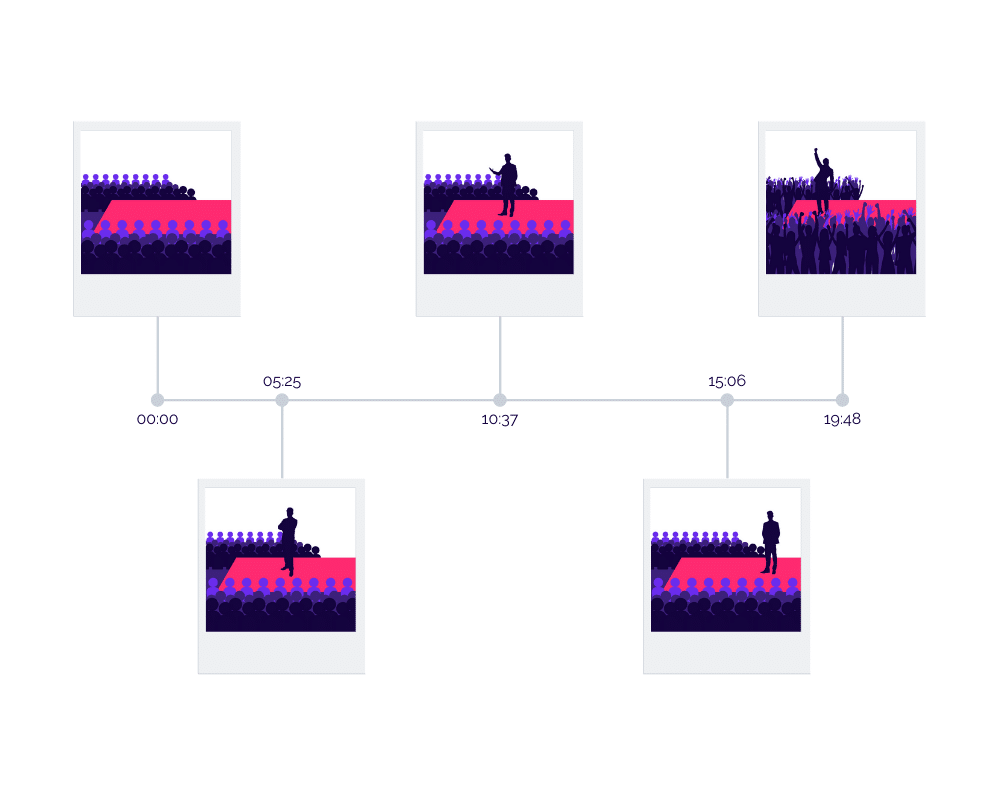
The next step, after choosing a topic for your TED talk, is crafting a clear and concise message around it. At most, TED talks run 20 minutes total, some as short as 10 minutes. There are two reasons for this design, the first of which is for the audience. As seen with students throughout the world, there are many factors that contribute to people’s attention spans. In light of this, the more concise your talk, the less likely audience members’ focus will stray. The other reason TED talks are kept short is to test your speaking ability. Since the TED Conference was first hosted in 1984, their mission has been to “change attitudes, lives and, ultimately, the world” through the ideas of their speakers. That means each TED speaker has to be exceptionally knowledgeable in their focus industry and able to explain their knowledge on a variety of levels.
Depending on your topic, this may be easier said than done, especially if you’re discussing a complex subject. This is another reason to choose a topic you are passionate about. In most cases, the more you care about something, the more you know. Because of this, the more easily you’ll be able to identify the most important things the audience needs to know. You’ll also have an easier time when you write a TED talk, as each of these things can serve as a part of your speech. It’s almost like drafting a five-paragraph essay, as a high school student. The introduction and conclusion take care of two paragraphs, leaving three to outline yourself. When you write a TED talk, the same outline applies on a larger scale, and the most important pieces of your message are those body paragraphs.
Define a key takeaway for the audience.

After outlining the important bullet points to cover in your TED talk, the next piece of the puzzle is defining a key takeaway for your audience. In our essay analogy, this is like the thesis statement in your opening paragraph. In short, it needs to answer the question, “What sentence or phrase should the audience remember when they leave?” If you’re not sure how to define your thesis, the team at Ethos3 put it perfectly in one of their guides from 2018. In it, they recommended to write a TED talk and then sum it up in a single sentence. Although it sounds difficult, this ultimately forces you to narrow your message as much as possible. This makes it easier for the audience to remember your talk and gives you a reference point as you draft it.
More inspiration can also be found in video titles in the library of past TED talks or on the TED YouTube channel. Some of my personal favorites include “Dangerous times call for dangerous women” by Pat Mitchell and “To help solve global problems, look to developing countries” by Bright Simons. In each of these examples, there’s enough information to see what the speaker’s main topic is and get an idea of their argument. Likewise, your key takeaway should be engaging and succinct. Think of it like you’re designing it to be a mini version of your main idea, and remember the questions we covered earlier. Is it new, interesting, factual, and realistic? Can I passionately back it up? If your key takeaway can answer these with a “yes,” you’re all set for the next piece of the puzzle.
Draft your TED talk as a story.

At this point, you should be all set to write a TED talk. With your main arguments outlined and your key takeaway narrowed down, all that’s left is to add the entertainment aspect. This is largely where you can bring in your personal style and really make the TED talk your own. If you’re an experienced speaker, although TED talks are unique, you probably already have this nailed down.
On the other hand, if you’re a new speaker and still a little nervous about this, no worries! Learning to write a TED talk is like learning to write any speech in one way more than any other: the importance of stories. In addition to including facts and evidence, there are a handful of less structured ways to make your speech more of a story than a lecture. This not only makes you more relatable to members of the audience. It’s also yet another way to make your TED talk more engaging. After all, everyone loves a good story, right?
Some of the simplest ways to write a TED talk as a story are outlined by Disney film writer and director Andrew Stanton. Overall, one of the greatest tips he has can be found in his own TED talk from 2012: “Use what you know. Draw from it. It doesn’t always mean plot or fact. It means capturing a truth from your experiencing it, expressing values you personally feel deep down in your core.” In short, your speech should have a beginning, middle, and end like a story, but it should also be personal. Your audience is full of people just like you, so although being a little emotional might feel scary, it also makes you easier to connect with. If you can make ‘em laugh, too, that’s an added bonus. 👏
[hubspot type=cta portal=5815852 id=b3ed6230-e78d-4db6-a45e-f16c7b63db16]
Tailor your visual aids to your audience, your story, and your brand.

Besides the verbal aspects of your TED talk, you may want to consider a visual component, as well. In many of the examples we’ve touched on, this means a slideshow presentation to play behind you as you speak. Depending on the depth of your topic and the length of your talk, the complexity of your slideshow may vary. That said, it’s important to remember to keep things simple. The goal of the slides is to add to what you’re saying, not distract from it. Knowing this, as you create your visual aids, try to avoid gifs or images that could be distracting or disturbing. Conversely, take note of the less intriguing parts of your speech, too. Then, design your slides to include a visual aid or two during these points. That way, you can keep everyone engaged for necessary information, even if it’s not exciting.
The other piece to keep in mind, as you write a TED talk, is branding. On any visual aids in your speech, be sure your style is consistent with your spoken language and your brand. For example, if you’re speaking about how to handle grief, steer clear of a slide show with holographic gifs or a hot pink outfit. Again, the goal of visual aids is to add to your message and your stage persona. That means each piece of your TED talk – clothes, body language, wording, cadence, visual aids – works together to convey your message. As you wrap up the drafting part of preparing for a TED talk, keep this in mind.
Practice, practice, practice.
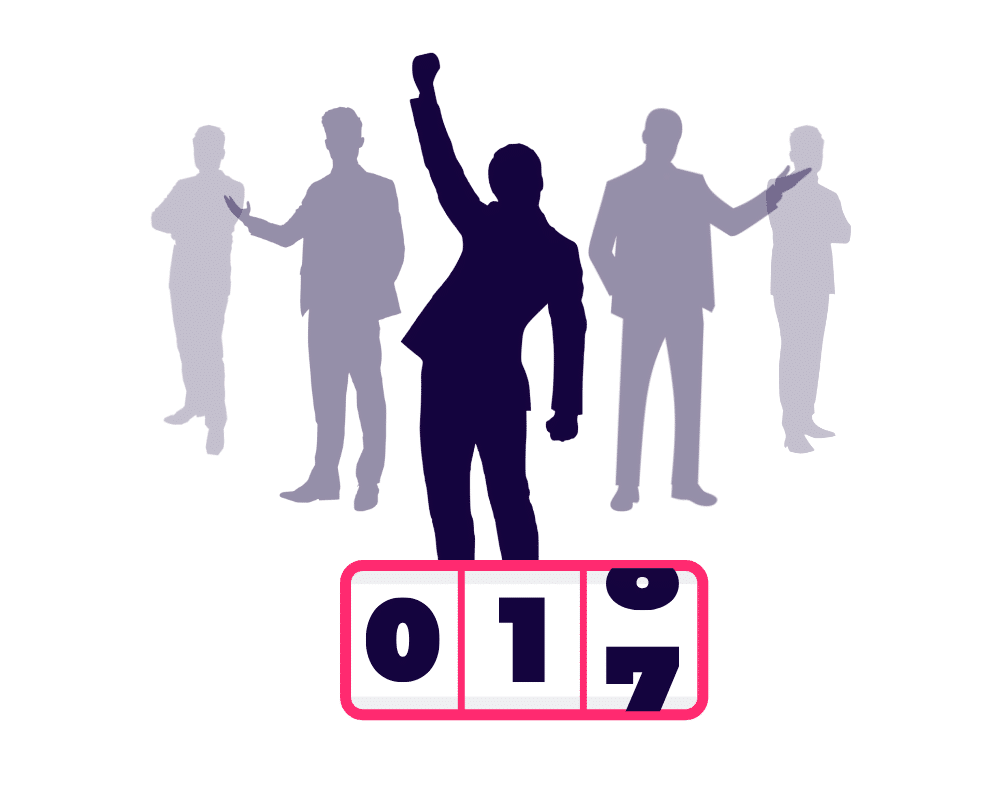
The final step in the pre-event steps to write a TED talk is a simple one: Practice, practice, practice. In front of as many people as you can, rehearse your speech and iterate as needed. Even as an experienced speaker, there could be ticks or bad habits that you may not notice but your audience will. Take one of my college professors, for example – We’ll call her Ms. Smith. Although Ms. Smith was a font of knowledge when it came to microbiology, she unknowingly was an incredibly distracting speaker. This was largely due to her constant gesticulating and the drama with which she moved her hands as she spoke. Obviously, for her students, this made it hard to follow her, but I’m sure to this day, she doesn’t even realize she does it.
To sum up, when you write a TED talk and start practicing, learn from Ms. Smith and have someone watch you present. Not only can they catch any habits distracting from your speech. They can also provide their own perspective on your body language or the structure of your presentation. All in all, you’re giving a TED talk for the benefit of the audience, in-person and online. What better way to make sure you reach that audience than to practice with a few “test’ audiences beforehand?
Remember it’s okay to show your flaws.

Lastly, as you write a TED talk, remember you don’t have to be perfect. Obviously, we all want to nail everything about our presentation, from our clothes to our body language to the words themselves. However, even if you’ve spoken thousands of times before, it’s normal to be nervous or slip up. In fact, tons of past TED speakers have felt the same. Just remember, in the words of artist (and TED speaker) Janice Tanton, “Fear is just a misguided form of creativity.” You entered the speaking industry because of your creativity and passion, so anything that you see as a flaw just makes you all the more memorable for your audience. Plus, if you do slip up on stage, being able to laugh at yourself helps connect you to your audience, too.
In conclusion, there are countless speaker awards and certifications out there that demonstrate how great a speaker you are and how much experience you have. The same validation also comes from speaking for the TED organization. Whether you appear at a small TEDx event or the yearly TED conference itself, having TED on your resume gives decision-makers their answer immediately. In other words, seeing that you’ve given a TED talk makes them more likely to hire you!
So, this year, as you either write a TED talk for an upcoming event or simply work to gain the TED Organization’s attention, remember this checklist. Feel free to also check out TED’s illustrated preparation guide or TEDx speaker guide, for tips and tricks from the TED Organization itself.
Have a TED talk in the books already? Let us know! Here at SpeakerFlow, we’re all about real connections with real people, and we’d love to give you and your TED talk a shoutout. 😊🎉
